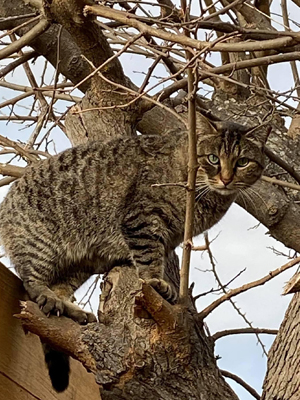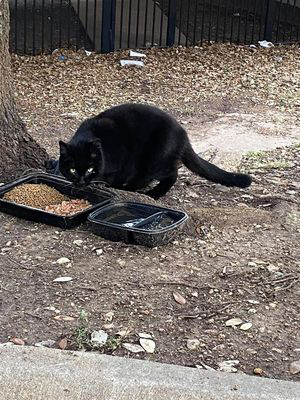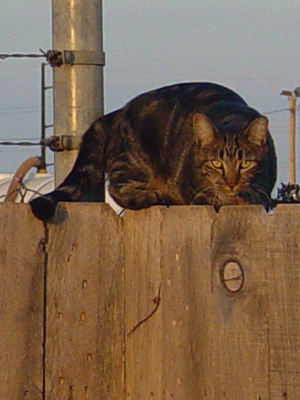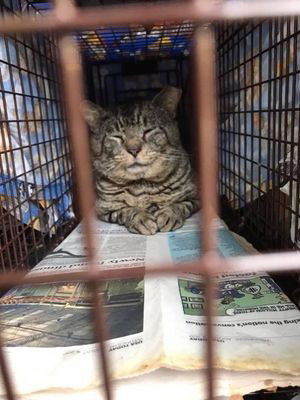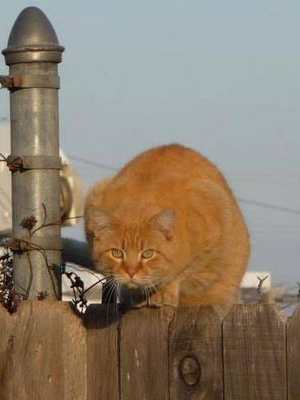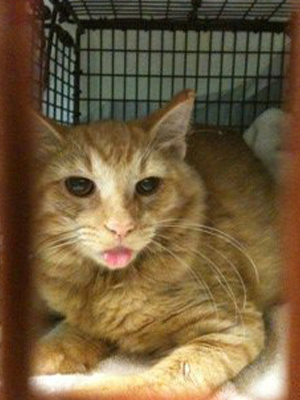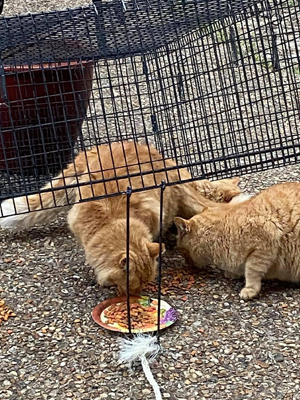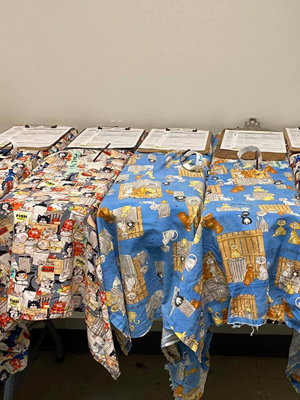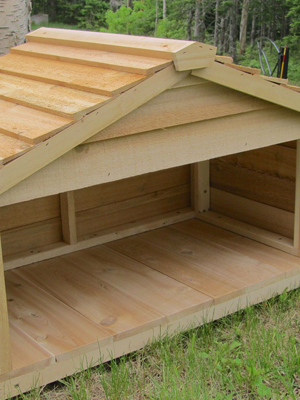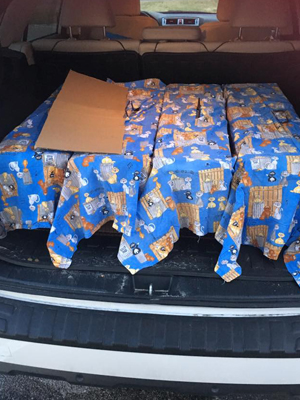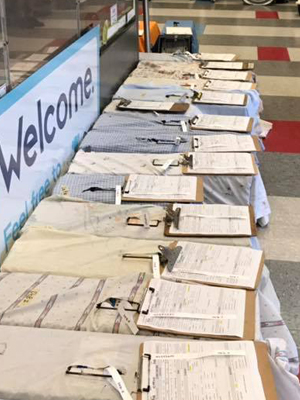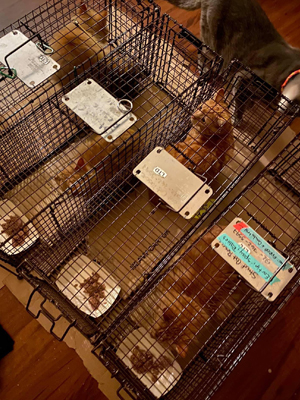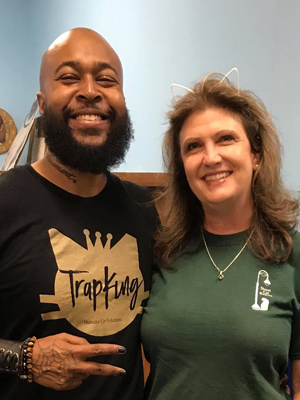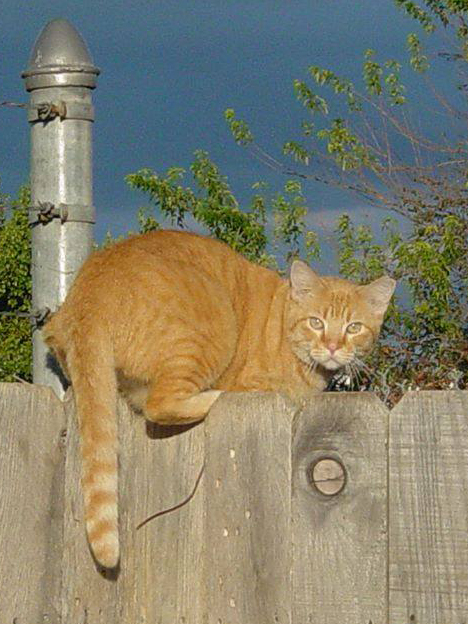
Helping the Cats and the Community
Community Cats
A Community or feral cat will likely never be anyone’s domesticated pet. But this does not mean that he or she does not deserve to live. We believe that feral (wild) cats have as much right to live as any other creature. And not just to live, but to have the best quality of life possible. We must remember that feral cats have no choice in the circumstances they find themselves in. They exist through no fault of their own.
They were either born to feral moms, or were abandoned or lost cats who have not been spayed or neutered and, left to fend for themselves. They then have reverted to a feral state to survive in the wild or outdoors. A colony is a group of cats that live in the same area. Trap/Neuter/Return is the only Humane Solution.
Please visit our FAQ page for most of the information you will need with Helping the Cats and the Community.
Providing for Feral Cats in a Managed Colony
Feeding Stations
A feeding station is important. It should be placed in a discreet location and kept dry and free from ants. You may sprinkle Diatomaceous Earth around bowls and the ground to keep ants away and use ant-proof bowls or a Moat (bowl inside of a bowl/pan) filled with water. Examples below:

Shelters
Shelters are important too. We only recommend STRAW for bedding as it does not retain moisture or get damp. Never use clothes, blankets, or cat beds — they will get damp and keep the cat cold. They burrow in the straw and it keeps them very warm. Lining with pressed styrofoam adds extra protection! ALWAYS make sure they have an exit and an entrance door to quickly escape if a predator approaches. They typically will not use an igloo or other one-way entryway shelters.

Use a brick or large stone to weigh the shelter down. EcoFlex Shelters — Available online and at many stores
And Our Trap of Choice
The TRU-CATCH 30 Ltd Light Duty Trap

What Are Some Things To Expect During The Trapping Process?
Trapping Tips
- When you are ready to bait the trap, line the bottom of the trap with a piece of cardboard that is cut a little smaller than the width of the trap, and which extends from the front of the trap, all the way to the back. It should bow over the trip plate, so that it is covered. Or, you can use an old hand towel or dishtowel to line the bottom of the trap. (I personally prefer to use the hand towel, as it feels softer on the cat’s feet.)
- Be sure to with-hold food for 24 hours before trapping so the cats will be hungry.
- Use smelly cat food, such as wet canned food, tuna fish, or jack mackerel, to bait the trap. Put it all the way to the back of the trap. Drizzle a tiny trail of food from the dish to the front of the trap. The smell entices the cat, and he will nibble the food while walking into the trap.
- For about five days before you actually trap the cat, tie the trap open and feed him inside of it. (Bungee cords or bread ties work well for holding the trap open.) This way he will be used to going in and out of the trap freely without being afraid. Then when you are ready to trap him, untie the trap and set it normally. 5. Always keep the trap covered with a towel. Even when you first bait it, put a towel over the trap, leaving the back open so air can circulate through. This creates a kind of “dark cave” effect that interests the cat.
- For hard-to-trap cats, use the “Hidey Hole” trick. Open up both ends of a cardboard box. Make sure the box is big enough to fit the open end of the trap into. Bait the trap as indicated in numbers 1-3 above. Then, put the open end of the trap into one side of the open cardboard box. Trail a little bit of food on the bottom of the cardboard box. Again, this entices the cat to go into the box, and walk straight through to the trap. Make sure that the towel covering the trap also covers the opening where the trap goes into the cardboard box.
- When transporting ferals in traps, be sure to line the seats of your vehicle with plastic garbage bags, or a plastic tarp-like you can buy at Walmart for a few bucks. This is just in case the cat pees during transport. Your seats will be protected by the plastic.
Aftercare
- When you pick up your feral cat(s) at the vet, bring him/her back to a safe place for recovery, such as in a garage or a spare bathroom.
- Keep him/her in the trap with the towel covering the trap so that he/she stays as calm as possible. Do not open the trap at all.
- Hold him/her overnight so that he/she has a chance to completely wake up from the anesthesia before release. If you let him/her go too early, he/she could still be woozy and stumble around and could potentially get hurt.
- Sometimes it might be necessary to hold a cat an extra day, such as if the feral is a lactating mother and may take more time to be completely awake and alert. In that case, if you want to try and get a little food and water in the trap, proceed with extreme caution. Only open the trap a tiny bit on the end to slide in the food and water, so there is less of a chance for the cat to get out.
SIGN UP FOR OUR NEWSLETTER
Please sign up for our newsletter for cat-related tips and tricks and to get updates on our cats and events!


